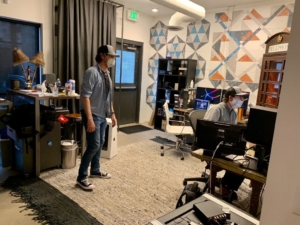Planning to Succeed or NOT?
In his latest guest blog, Brad Stimmel shares with us the readiness of leaders for the next stage in “Planning to Succeed or NOT?”
Every good business leader that I have ever encountered make plans for the coming year. And every plan has the first goal of creating success for that same period of time. But are you sure you are making all the arrangements for your plan to succeed or are you just setting yourself up for unintentional failure?
The styles of annual planning process differ greatly depending on many factors of the company and its leadership. In each company, the different styles of plans are usually financially driven. And, of course, then it is broken down into its components by department and then by revenue, expenses, and profit. This is pretty much the basic process done in many different manners by every company. In some companies it is done from top management down and some companies it is created middle management up. All of it will sum up to a potentially successful plan that is aimed at reaching the company goals for the coming year.
But there could be missing components that are equally as important. Ones that, if left undone, could increase the probability of failure to reach the company financial goals.
The concept is reduced to a twist on an old cliché quoted from an anonymous source:
“Ready, Fire, Aim”
It can be further qualified this way:
- “Ready” means your standard financial plans that are well done and created with good planning and collaboration.
- “Fire” means the approval, communication and launching this great plan for the coming year.
But… is everyone on your team “Aiming” in the right direction or even the same direction as others? Usually not.
If each of your team members have not personally created a set of Measurable Objectives that will move their department and their personal efforts in the direction of the financial plans, then the probability of failure is much higher.
As Peter Drucker states:
“Objectives are not fate – they are direction. They are not commands – they are commitments. They do not determine the future – they are means to mobilize the resources and energies of the business to make the future.”
All managers and Sales representative should create a set of measurable objectives that create success for them and their departments. The objectives should be specific milestones that are productively moving toward the overall company financial plan. They should have specific dates to target and well-developed action plans to accomplish over time. They should name any collaboration required with other members, vendors, or departments. And finally, they should be agreed to by their supervisor but never dictated by him or her.
As Drucker says, “There is a great difference between doing things right and doing the right things!”
This objective plan should be cascaded to all managers and sales representative at all levels. The higher the agreement and the clearer the communication of these objectives up and down the organization, then success is almost inevitable.
The last important step after the objective planning is to complete a quarterly review on progress toward the objectives with each participant. NO penalty and NO reward should be offered. Just check for progress. If the objectives are just filed away in a cabinet until the end of the year, then most likely not much will change until the end of the year. And then it is too late.
So here is the summary of the ESSENTIALS OF OBJECTIVES PLANNING.
- Individuals determine their objectives and share with their supervisors. They both agree upon and state very precisely the specific results that are to be accomplished by a specific future date either by the individuals or by the units they manage.
- These same individuals work enthusiastically to achieve the expected results because, in the process of developing their objectives, they have become sincerely committed to achieving them.
- Regularly, the results achieved by these individuals and the units they manage are measured and reviewed at least quarterly. (I suggest a dashboard be set up for each individual member if your enterprise management system software provides this option.)
This whole concept is carried along on a wave of increased communication.
“The clearer the idea you have of what it is you are trying to accomplish, the greater the chance of accomplishing it.”







